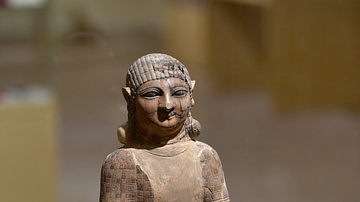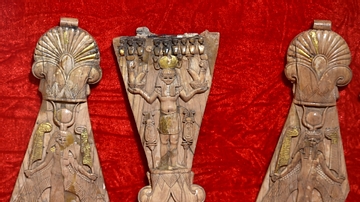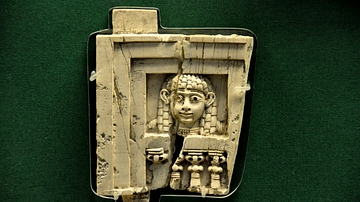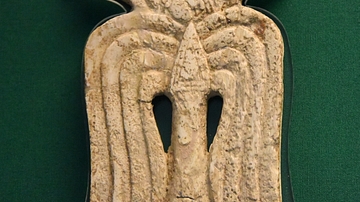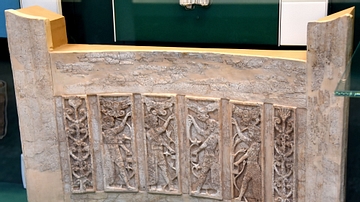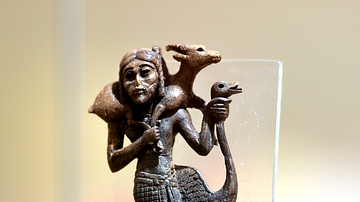Illustration
This is the outer cover of the ivory writing-boards (6 in number) incised with four lines of Assyrian cuneiform text, giving the title of the astrological script which was a compilation of omens ordered by Neo-Assyrian king Sargon II (reigned 722-705 BC) to be set up in his palace at Khorsabad. The surface still harbors traces of beeswax; this is the earliest known specimen from Western Asia of writing upon wax.
The text reads"'Palace of Sargon, King of the world, King of Assyria. He caused [the text
beginning with the words] Enuma Anu Enlil to be inscribed on an ivory tablet and set it in his palace of Dur-Sharrukin".
Found inside Well AB at the North-West Palace of Ashurnasirpal II, Nimrud, Iraq, by the British School of Archaeology in Iraq led by Sir M. Mallowan (1904 - 1978 CE); Well AB was previously discovered by Sir H. Layard (1817 - 1894 CE) in 1851 CE and rediscovered by Sir Max Mallowan in March 1953 CE. Late 8th century BCE. On display at the Iraq Museum in Baghdad, Republic of Iraq.
About the Author
References
World History Encyclopedia is an Amazon Associate and earns a commission on qualifying book purchases.Cite This Work
APA Style
Amin, O. S. M. (2019, June 08). Ivory Writing-Board from Nimrud. World History Encyclopedia. Retrieved from https://www.worldhistory.org/image/10892/ivory-writing-board-from-nimrud/
Chicago Style
Amin, Osama Shukir Muhammed. "Ivory Writing-Board from Nimrud." World History Encyclopedia. Last modified June 08, 2019. https://www.worldhistory.org/image/10892/ivory-writing-board-from-nimrud/.
MLA Style
Amin, Osama Shukir Muhammed. "Ivory Writing-Board from Nimrud." World History Encyclopedia. World History Encyclopedia, 08 Jun 2019. Web. 15 Apr 2025.



